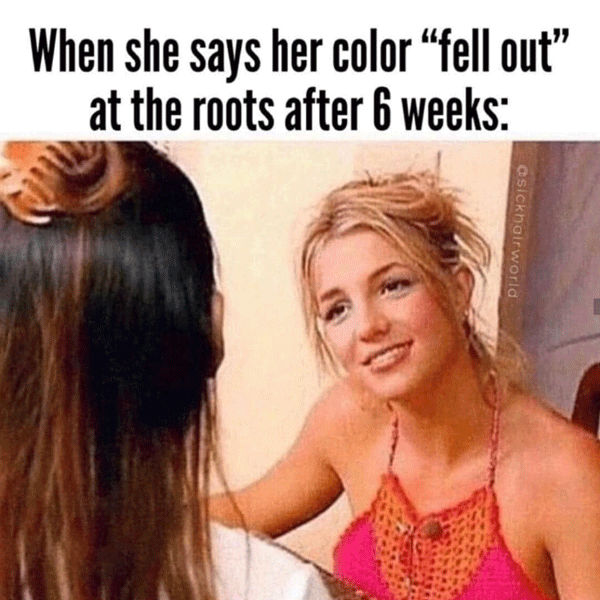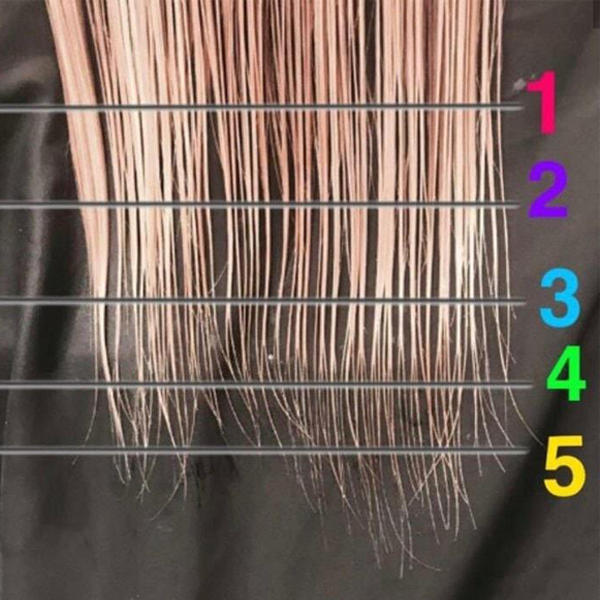Is A Trim The Same As A Haircut? Read This!
What’s The Difference Between A Trim & A Full Haircut? Find Out Here!
A trim is cheaper than a full haircut, right?! Those words will give any stylist some serious scaries, but why? Whether it’s removing an inch or four inches, there’s no question—stylists are using their time, hands and skills to create the desired looks their clients want, no matter the length! But how do you determine what’s really considered a trim? Is there really such a thing? We posted this graphic on BTC’s Facebook and here’s what the fam had to say.
Do What The Paying Client Wants, But Make Suggestions

“Do what the client wants. Then, encourage them to come in regularly. I have long hair myself and asked a co-worker to just trim my ends and she cut off two inches! I was furious. I asked her why, and she said, ‘Well, it needed it.’ Don’t do that to your clients. They might not come back.” – Dan Forest
“Ugh and here’s this discussion AGAIN! 🙄 No matter how much we’d love to cut off, ultimately it comes down to what the client wants. That’s why they pay us…I always ask what’s YOUR idea of a trim and then show them what’s going on in the back because they truly can’t see it. That and most have NO idea what an inch looks like.” – Vicki Sonday
“I tell my clients to hold up their fingers and show me how much they want off. Because I tell them, what your trim means and what mine does will probably not be the same.” – Kim Current Knauff
“I ask, ‘What is YOUR version of a trim?’ I also ask for them to show me what they think an inch is (picks up four inches of hair.) They have no clue. Finally I spin them around and hand them the mirror to see what everyone else sees. If you can see through it I suggest cut it off (shrieking!).” – Ryan M Wade
“Whatever makes the client happy. It’s their hair, not mine. If they want a five, then five it is.” – Sedona Langel
“She would want five. I would want to do three so that the split ends are gone, but we would discuss and probably compromise on four 😂” – Natasha Campbell
“A trim means taking off the least amount of hair possible to make it look healthy again. At least from a hairstylist’s point of view, so four is a trim. However, at the end of the day asking the question to the client, ‘what does a trim mean to you,’ will ultimately answer the question and make your client happy. After all that’s the goal, right!?” – Laura O’Dell
It’s Never Just A Trim & Always A Haircut

“If my scissors ✂️ are going in my hand and they are opening and closing, it’s a haircut. PERIOD. I don’t care how much I’m taking off. Trim or not, I’m going though the same process. It’s up to them how much they want me to take off. But it’s STILL a haircut. Much like the word. I’m cutting hair. This isn’t my hobby, it’s my JOB. And I need to get paid for my job.” – Marc Lipari
“I correct my students all the time. I tell them, we are not gardeners. We are cosmetologists. Gardeners ‘trim’ hedges, we ‘cut’ hair. Ugh, I hate the word ‘trim.'” – Kris Watts
“I never use the word ‘trim.’ I tell clients that it doesn’t matter how much I take off, it’s what I leave on that counts and that’s what they are paying for.” – Janet Lapalapa
“It’s funny how many people think that a trim should be cheaper. Do they NOT understand that it takes just as long to take half an inch [off] than to take five inches? Same amount of work. It’s the time they’re paying for, not the amount of hair on on the floor.” – Theresa Halpin
“It’s a haircut. The amount to take off for the customer to return is one inch. I recommend two and rebook for eight weeks out. Never scare the customer away—that’s your money you’re playing with. Oh, and don’t use the word ‘trim’ the whole time to move her away from that word.” – Veronica Alegria
“They’re all haircuts. Who’s starting this trim foolishness? 🤦🏽♀️ Just tell me what you want to look like when it’s done and I’ll chose what should be cut.” – Aeleise Harris
“Can we stop using the word ‘trim’? A haircut and a trim are the same amount of work so therefore the same price! Now if someone needs a ‘clean up’ to cut off some stragglers I will gladly do that after a color service for no cost…but coming in just for a cut is a full service there for full service prices.” – Angela Edmondson
“Do people think a trim does not require all the elements of a cut? Cutting at one or five still requires the same comb, scissors and hands.” – Kim Stair
Call It How It Really Is—A Clean Up Or Dusting!

“What I consider ‘just the ends’ or ‘dusting’ would be a five. I won’t charge for that after a lengthy color service. A trim is four. What they need is at least a three if not I would try to convince my client to at least a two! Price accordingly.” – Kerri Treubert
“I only let my clients with healthy hair use the word ‘trim’ 😂 I also use the word ‘clean up’ like someone mentioned above. I stand by my work and I always recommend how much someone needs off. I’m request-only so my clients always trust me and know I won’t hack their hair off in a scissor happy rage.” – Mary Cristin Shultz
“Five is a dusting, everything else is a cut! If you’re handling all of the hair at once, it should be priced accordingly (although I have taken care of loyal clients by not charging for a dusting after a lengthy and expensive chemical service)!” – Heather Sung
“I don’t believe in trims unless the hair is healthy. If they were in my chair, I would tell them absolute minimum is line three, but I would prefer two. When the ends look like this you aren’t losing length really by cutting it off, you’re cutting off past damage and getting the fullness back in your ends. These are actually my favorite cuts because I let them hold a mirror if they’d like so they can see exactly what I’m talking about as it’s happening.” – Paige Carnett
Relatable Content? Here Are 10 Times You Wish You Could Tell Clients No! 








